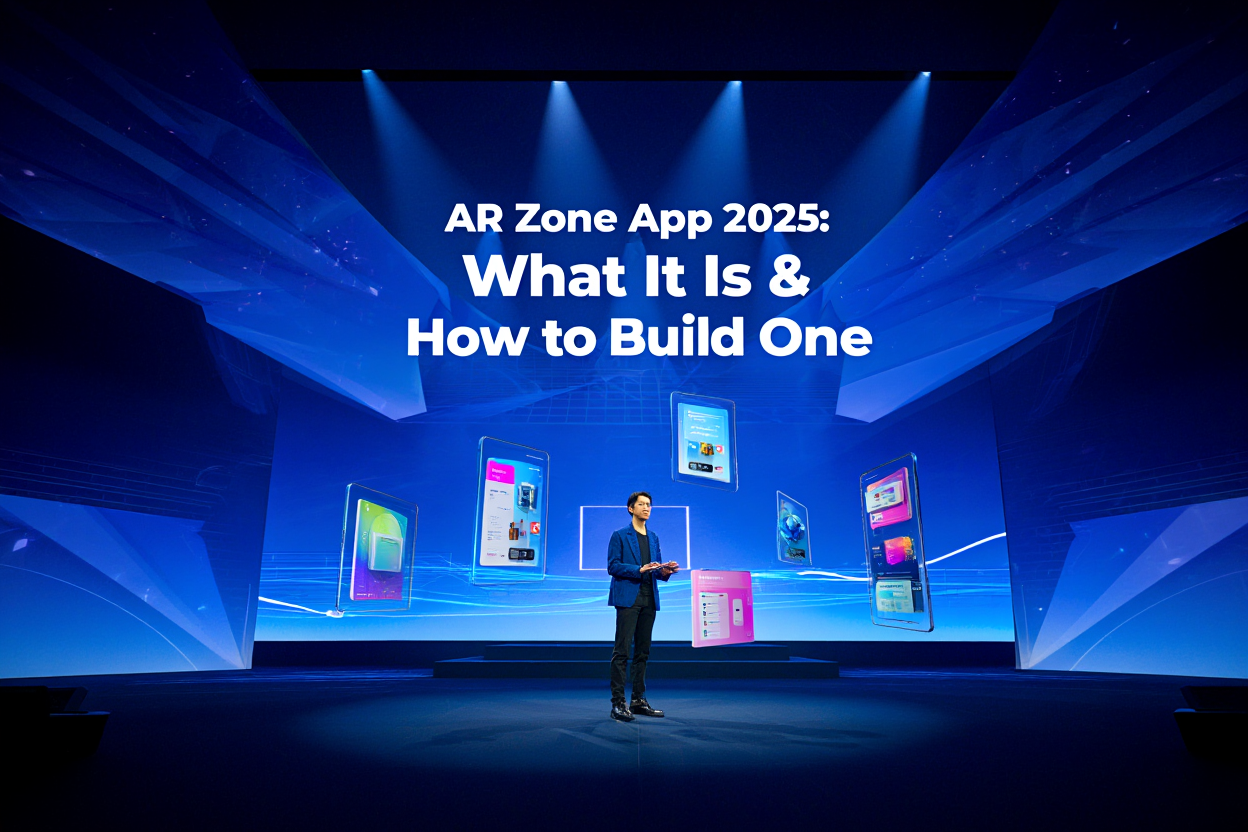
In 2025, augmented reality (AR) is no longer a futuristic concept—it’s an integral part of how users interact with their mobile devices. From virtual makeup try-ons to 3D object visualization and immersive gaming, AR has revolutionized the way apps deliver value, entertainment, and utility. This transformation has elevated user expectations, pushing businesses and developers to rethink what’s possible within a mobile interface.
Table of Content
Among the earliest and most recognizable players in this space is Samsung’s AR Zone app, a platform that consolidated various AR features into one experience—from AR emoji creation and fun filters to 3D scanning and real-time measurement. As AR technology becomes more sophisticated, the AR Zone concept has evolved into something much broader and more powerful, integrating AI capabilities, voice recognition, and metaverse compatibility.
In this blog, we’ll explore what an AR Zone App really is in today’s context, how it’s shaping mobile experiences in 2025, and most importantly—how to build one. Whether you’re a brand aiming to enhance customer engagement or a business considering an investment in immersive tech, this guide will walk you through everything you need to know about creating a next-generation AR experience. We’ll also delve into the technologies, trends, and professional services—such as partnering with a trusted AI development services—that make this possible.
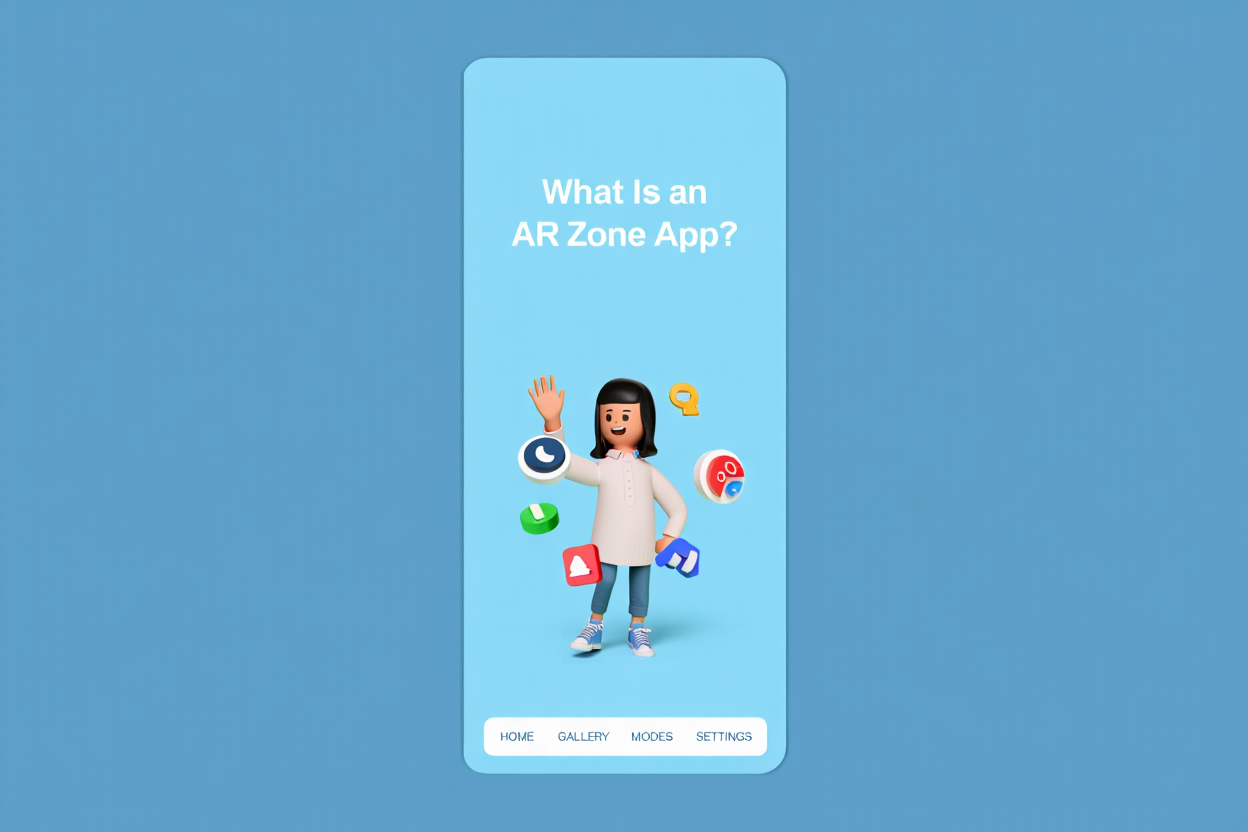
An AR Zone App is a feature-rich, interactive platform that uses augmented reality technology to superimpose digital elements—like 3D characters, text, or effects—onto the real world through a smartphone camera. At its core, it allows users to engage with their environment in new and entertaining ways, blending the physical and digital worlds seamlessly.
Unlike traditional apps, AR Zone Apps don’t just show information—they transform how that information is experienced. Whether it’s enabling users to see how a piece of furniture would look in their living room or creating personalized avatars that mimic facial expressions in real-time, the aim is always the same: to enhance user engagement through immersive, responsive content.
A classic example of this concept is Samsung’s original AR Zone app, which offered features such as AR Emoji, Doodle, and Quick Measure. These tools allowed users to personalize their photos, take measurements using their camera, and animate their selfies—all within one centralized app interface.
Fast forward to 2025, and AR Zone Apps have undergone a significant evolution. Today’s versions are smarter, faster, and more dynamic:
As more businesses explore how to create AR Zone apps tailored to their customers’ needs, there’s also a growing demand for customized AR platforms that go beyond default device offerings. From fashion retailers launching virtual try-on tools to real estate firms offering 360° virtual tours, companies are increasingly looking to build augmented reality apps that align with their specific brand goals and user experience standards.
In the sections that follow, we’ll dive deeper into the features, benefits, development process, and cost considerations involved in creating a future-proof AR Zone app in 2025.
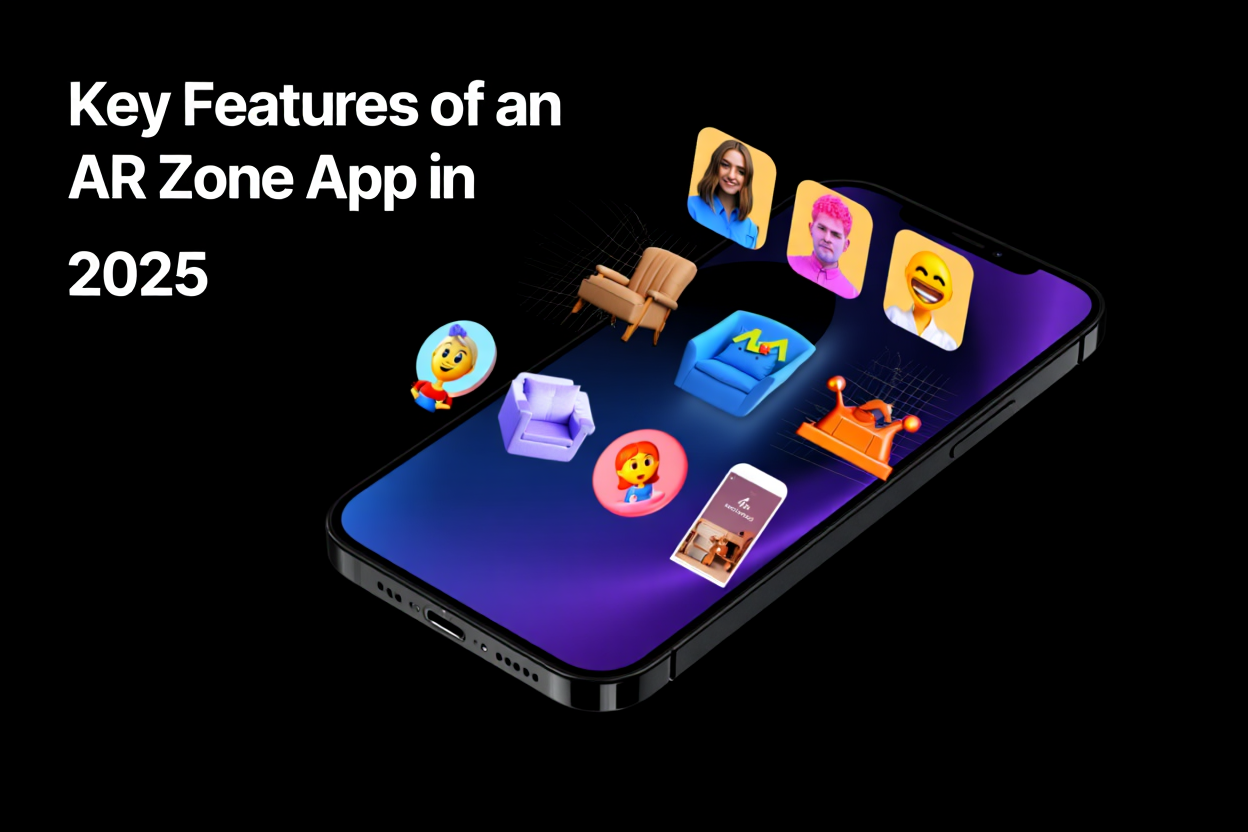
As Augmented Reality matures in 2025, AR Zone Apps have become more powerful, intuitive, and multifaceted. Whether you’re looking to build an AR Zone App for entertainment, retail, or brand engagement, the following features have become essential benchmarks for success:
Let users create animated emojis that mirror facial expressions and gestures in real time. A fun, engaging way to personalize conversations or content, this feature remains a staple in AR-powered social apps.
Draw in 3D space using your smartphone’s camera. AR Doodle allows users to create artwork in the real world—perfect for educational apps, creativity tools, or gamified experiences.
From virtual lipstick to real-time skin smoothing, these filters are now more precise thanks to AI-powered facial mapping. They’re widely used in beauty apps and by influencers for social media content.
Transform a smartphone into a digital ruler. This tool uses AR to measure the dimensions of objects or rooms—ideal for interior design, DIY apps, or construction solutions.
Empower users to scan physical objects and convert them into 3D models. Whether it’s for design, documentation, or 3D printing, this feature opens up new creative and industrial possibilities.
Let customers “try before they buy.” Fashion retailers and eyewear brands use AR try-ons to reduce returns and enhance the shopping experience. This functionality has become a standard in custom Augmented Reality apps.
Using advanced AI development services, AR Zone Apps can now identify and track complex objects with high accuracy. This enables context-aware AR interactions across industries—from gaming to medical training.
Swap out a user’s background in live video without a green screen. Useful for professional presentations, content creation, or immersive storytelling experiences.
Built-in integrations with social media platforms allow users to share AR content directly from the app—amplifying engagement and brand visibility.
From treasure hunts to collaborative puzzles, developing AR Zone Apps with gamification elements keeps users entertained and invested.
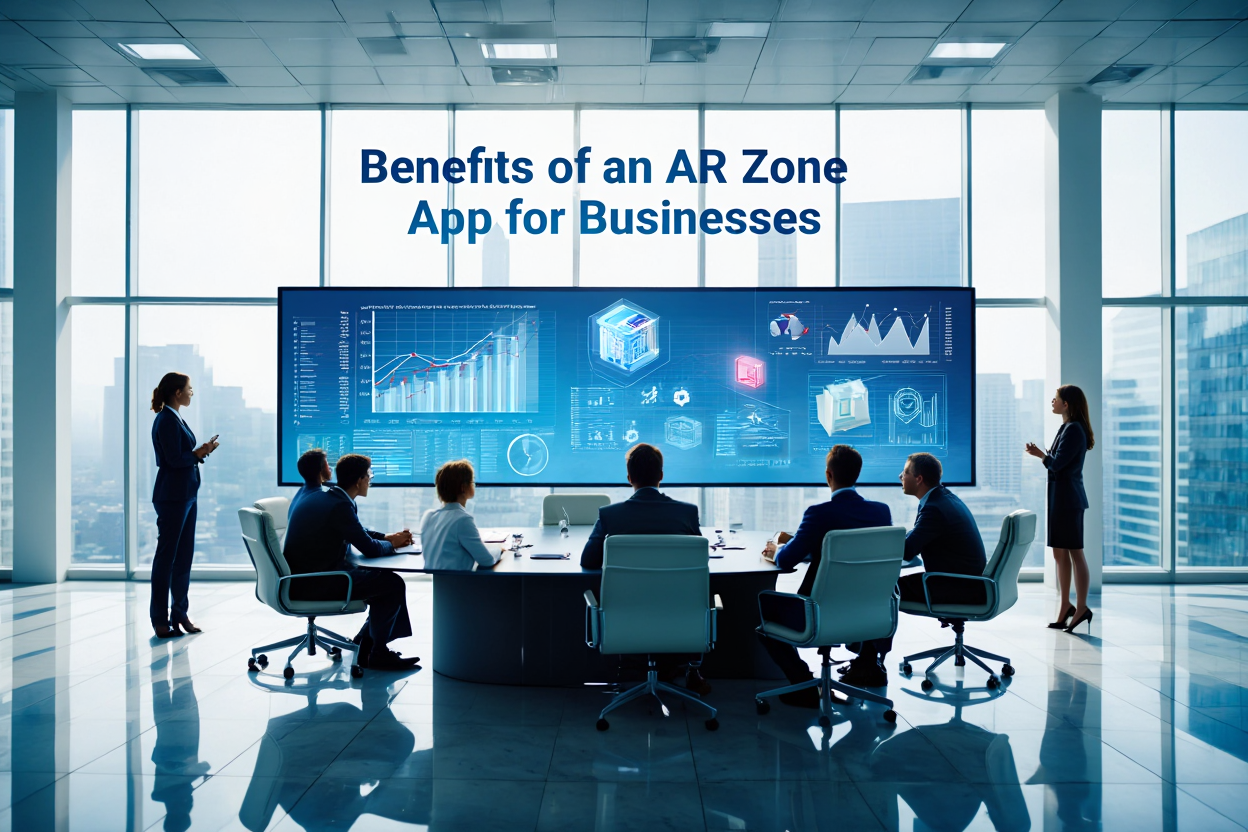
Investing in AR Zone App development isn’t just about being trendy—it’s about creating value. Here are the tangible benefits businesses can expect:
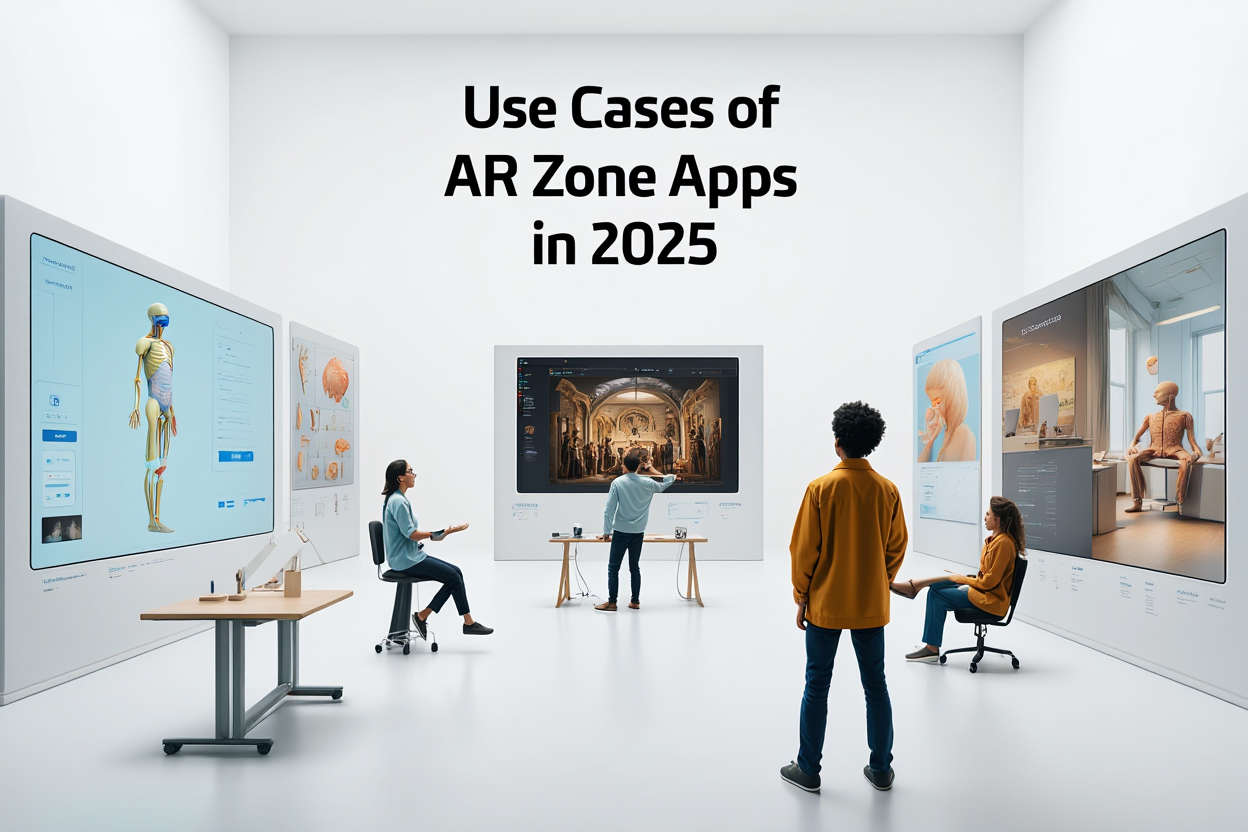
The versatility of AR makes it suitable for a wide array of industries. Below are some of the most impactful use cases in 2025:
Whether you’re aiming to develop an AR Zone app for internal operations or customer-facing innovation, these use cases demonstrate the limitless potential of AR in 2025.

The Augmented Reality market is on a steep upward trajectory, with global revenue projected to surpass $100 billion by 2027. In 2025, the ecosystem is being shaped by several key trends:
Low-latency 5G networks enable real-time AR rendering, while AI development services provide context-aware interactions, object detection, and predictive user behavior modeling.
Smart glasses and AR headsets are no longer experimental—they’re entering mainstream usage. AR Zone Apps now need to be compatible with these wearables for a seamless cross-device experience.
Platforms like Unity, Vuforia, ARKit, ARCore, and WebAR dominate the development scene, allowing companies to build AR Zone apps for both iOS and Android with minimal codebase duplication.
Modern AR apps increasingly utilize AI agent services to provide guided tours, customer support, or virtual assistance inside the AR interface—blending the physical and digital service layers.
Staying ahead in AR requires a clear understanding of these trends, and collaboration with a knowledgeable mobile app development company that specializes in custom AR app creation.

Creating an immersive, intuitive AR Zone App in 2025 requires a strategic blend of market knowledge, technical precision, and user-centered design. Here’s a step-by-step guide to help businesses and innovators build an Augmented Reality App that delivers meaningful user experiences and long-term value.
Before diving into development, it’s essential to understand what your users want and what your competitors are already offering.
The foundation of any Augmented Reality app lies in the technology stack. Choose a platform that matches your target devices and feature goals.
Clearly identify the purpose and capabilities of your app.
Users expect smooth, visually rich experiences. Design around the AR interaction itself.
Collaborating with an experienced can significantly streamline your journey from idea to launch.
This is where your app comes to life.
Don’t aim for perfection at first—launch a beta or MVP version.
The development cost of a high-quality AR Zone App in 2025 can range between $30,000 to $150,000+, depending on:
Working with a full-service AR development agency not only ensures technical execution but also optimizes your time-to-market and overall cost efficiency.
If you’re looking to develop an AR Zone App in 2025, choosing the right partner is critical. Code Brew Labs offers a specialized team that combines innovation, speed, and long-term support.
Monetization Strategies for AR Zone Apps
Monetizing your Augmented Reality App can be highly lucrative if planned well:
Data Privacy & Compliance in AR Apps
Incorporating AR means handling sensitive data like user location, camera access, and in some cases, biometric information.
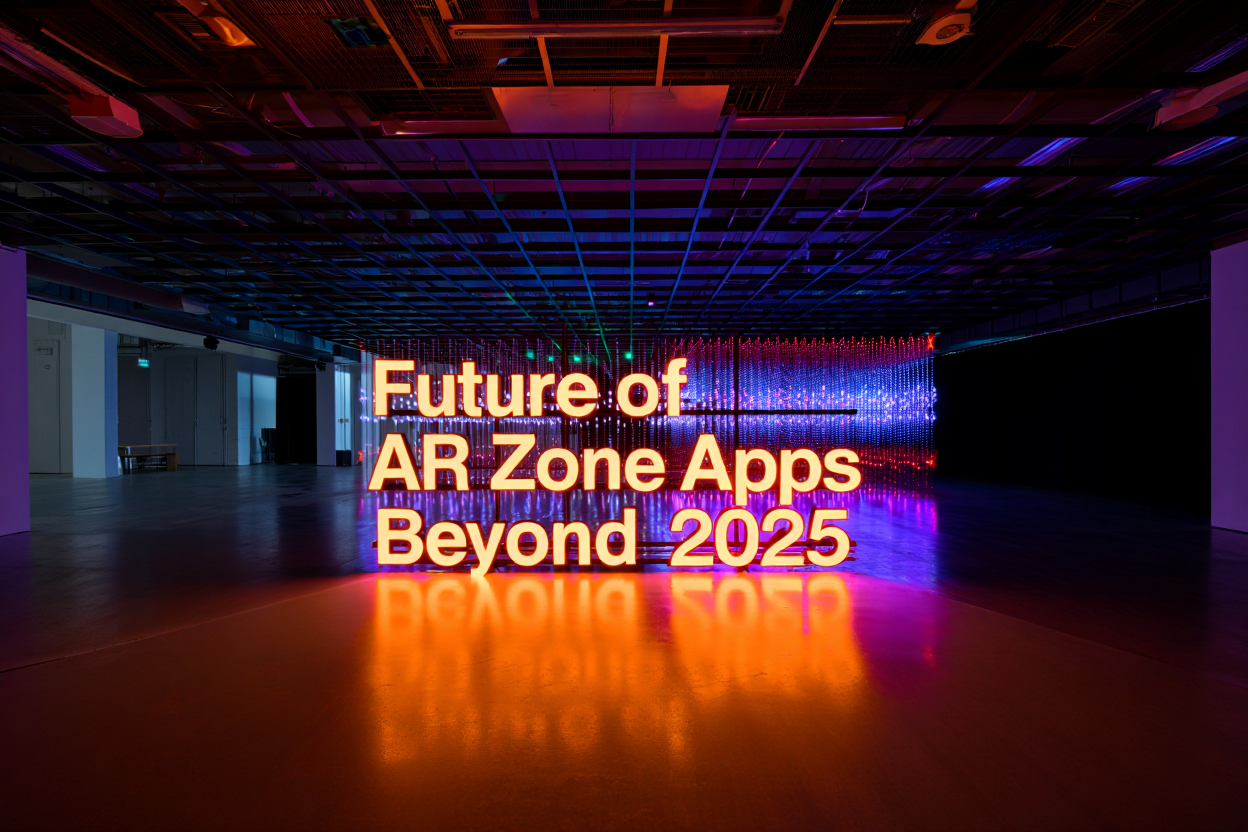
The AR landscape is evolving fast, and AR Zone Apps are poised to go beyond mobile screens:
AR Zone Apps are no longer a novelty—they are a transformative layer on top of mobile computing. In 2025, they offer endless possibilities for user engagement, product interaction, and brand storytelling. Whether you’re aiming to create an AR Zone App for immersive retail or educational content, the time to innovate is now.
By partnering with a forward-thinking smart integrations like AI development services and AI chatbot solutions, businesses can stay ahead in a fast-moving digital landscape.
